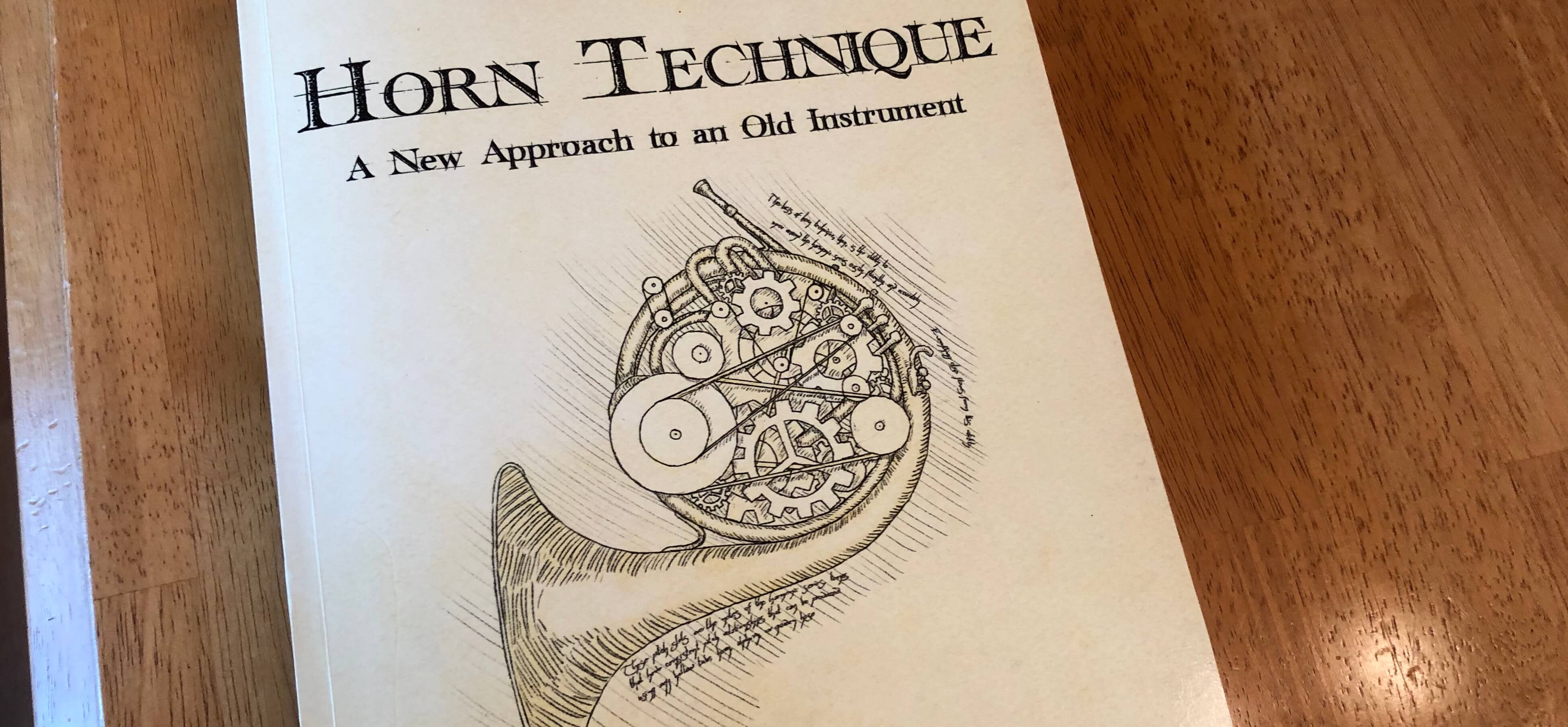First things first – Horn Technique by Jeffery Agrell covers a lot of ground.
The content is well organized, though, and while the layout is different from some of the most popular books on the horn (like The Art Of Horn Playing by Phillip Farkas), I think it works well to make this book approachable for a wide range of players.
Part 1 – Introduction
One thing that I enjoy about the book is how Jeff takes the time, in the beginning, to really dissect how the horn works.
Over the past 10+ years of teaching, I’ve started introducing the harmonic series sooner and sooner. And it’s amazing how far just a bit of harmonic knowledge goes. The fact that its front-and-center here is fantastic.
I didn’t properly learn the harmonic series until college. I’m glad I learned it eventually, but I’ve found that younger kids really benefit from knowing what’s going on behind-the-scenes. Not only for the technical aspect, but it helps immensely learning transposition.
Part 2 & 3: Valveless and Valved Playing
The book also divides its studies into the two main “types” of horn playing: valveless and valved technique. This is something I do, but I’ve never expressed it so succinctly. I love this way of phrasing it!
I’ve long been telling students that they need to know two things:
- How the horn works (the harmonic series)
- How music works (scales, arpeggios, etc.)
Jeff’s approach is broadly similar. Breaking these two aspects of playing apart seems to help students get over things which look harder than they are. I really enjoy introducing young students to “hard” keys like B and C# – before they develop a fear of sharps. Playing these arpeggios on the harmonic series is easy and boosts confidence.
Plus these kids can start doing “transposition” without realizing how hard it is!
Part 4: Practice
After the basics of valveless and valved study (with lots of exercises for both aspects of playing), the book dives into something unusual (but very useful): practice technique.
At the beginning of this section, he gives some other excellent books to check out. If you’re serious about improving in any skill, these books on the science of improvement are invaluable.
- The Talent Code by Daniel Coyle
- Talent is Overrated by Geoff Colvin
- Peak by Anders Ericsson and Robert Pool
- Bounce by Matthew Syed
These aren’t horn- or music-specific books (although the authors all discuss music in some aspect), but they can help inspire you to really put in the hard and focused work that deliberate practice demands.
Whether or not you end up getting Horn Technique, these books will help you learn how to learn. Which is a skill that transcends any one focus or career.
The rest of this section goes into more detail about how to “design” your practice session. How (and how much) to warm-up, ways to split up your practice (balancing warm-up, technique, and repertoire), and even some sample practice templates for those that have 1, 2, or 3 hours of time in a day to practice.
Section 5 through 9 – MORE!
All these sections up until now have been informative but geared toward younger students – from middle to high school age. The next sections of the book cover the same three principles (valveless, valves, and practice) at a more advanced level. Jeff actually divides his practice planning section into three separate sections, covering technical development, learning repertoire, and performance (including sight-reading, transposition, and improvising).
I really like this layout. It makes it easy for younger students to really absorb the lessons and techniques at the beginning of the book, without being either intimidated or developing bad habits.
While this book is no substitute for a competent teacher, this layout makes a lot of sense. It also makes progress easier to track and more balanced.
Just by going through the book the student is encouraged to bring all three core skills (valveless, valved, practice) up to roughly the same level at all times. This balance is necessary to keep moving forward, no matter your level.
Section 10 & 11 – Peak Performance and Resources
The final few sections cover lots of niche topics in detail. Things like performance anxiety, focus, improvisation, and lots more. Some of this is new material, but much of it is taken from Agrell’s numerous Horn Call columns, and it’s nice to have such a wide variety of them in a single place.
There are also several collections for further reading on a variety of topics, including:
- Peak Performance books
- Books on the Horn (divided by topic)
- Useful web resources for the horn
- Interesting dissertations on the horn
- Important books not directly about the horn
- A horn etude index
These collections are treasure troves in themselves.
Final Thoughts
With all this information, this book really does belong on the shelf of any horn player, and I think any brass player would do well to get a copy.
The sections on practice and performance alone are worth the price, and the knowledge of the harmonic series is instantly translatable to all brass instruments.
You can get the book from Amazon in either digital or paperback. I love my paperback version, but I’m strongly considering buying the Kindle version too since there are so many times I’ve wanted to reference the book in teaching but didn’t want to lug around all 400+ pages!



Leave a Reply
You must be logged in to post a comment.